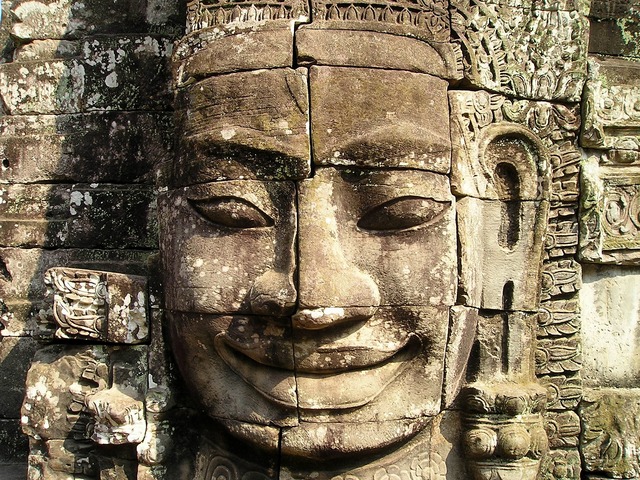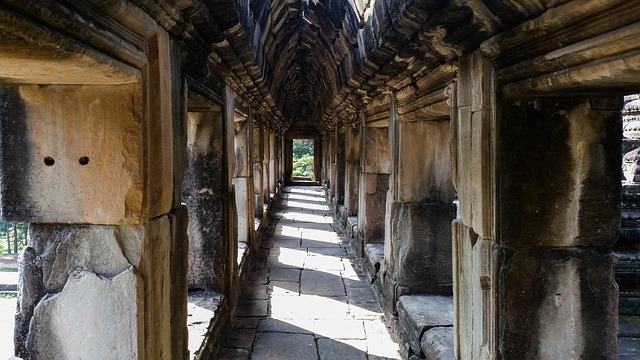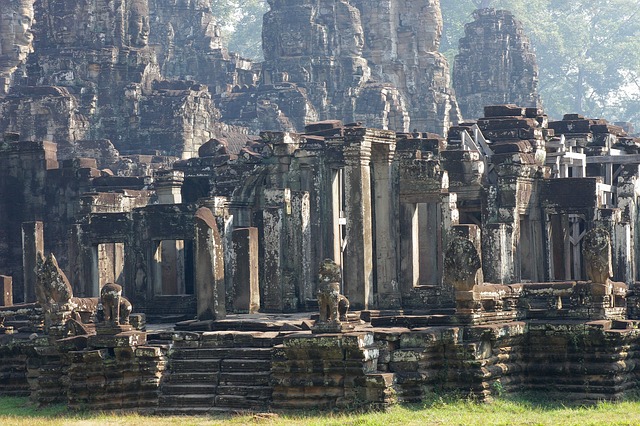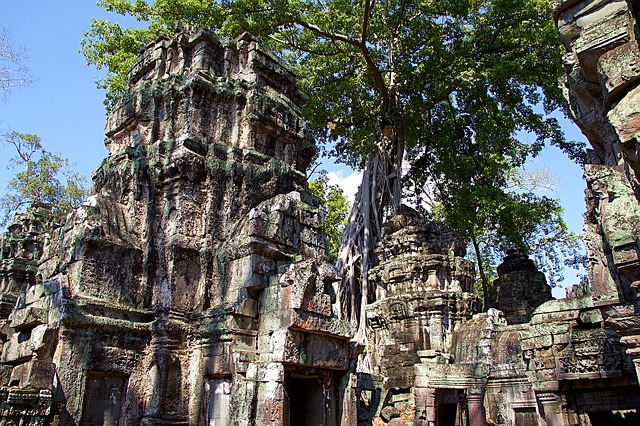Used to be a megacity which marked the sublime Angkorian period extending about four centuries in Cambodia, Angkor Temple Complex is now a place of memorial, a reminder of the bygone era. From an incredible and flourishing capital to a rustic ancient ruin, its history is an intriguing story that everyone who plans to visit Angkor should be aware of.

The Formations Of The Very First Stone
According to the archeologist, the Angkorian era dated shortly after 800 AD with the rule of Jayavarman II. He was the first to liberate Cambodia (Kambujadesa at that time) from Java.
The capital of the newly independent kingdom set in Hariharalaya (now becomes Rolous), about 13 km to the east of . The king also declared himself the universal monarch, the god-king, the representative of the Shiva, a Hindu god, in a human body. He ordered his people to build a ‘temple-mountain’ at Phnom Kulen, which set a dominant precedent for the staggering architectural productivity featuring the Angkorian period.
The next rulers of the Khmer Empire continued to celebrate their glory and divinity by establishing more and more temple-mountains, but at a much larger scale. Yasovarman (ruling from 889 to 910) built his central temple on Phnom Bakheng, a prized spot for viewing the sunset over Angkor Wat. Numerous Hindu temples, ashrams, and retreats for ascetics were also set up.

The Glorious Days Of A State Capital
Approximately more than 300 years after the formation of the Khmer Empire in Cambodia, Angkor Wat was built by one of the greatest emperors in Cambodian history, King Suryavarman II. The time between 1113 to 1150 is also the golden period of successful conquests, advantageous turmoils.
The construction of Angkor Wat was initially prepared for the King Mausoleum. However, as Suryavarman II was influenced by Vaisnavism, dedicating to Vishnu rather than Shiva god. That’s why the walls of Angkor Wat depicts the Hindi cosmology with bas-reliefs portraying not only scenes from mythology but also from real life.
The creation of Angkor Wat and the reign of Suryavarman II implies a remarkable emblem of Khmer civilization. However, there were blurry signs of declination as the hydraulic system supporting the agriculture of Angkor had been pushed beyond its limits. Overpopulation and deforestation had started to silt up the water flow.
After the death of Suryavarman II, the country stepped into a period of domestic strife. There was a continuous water-borne invasion from Champa Kingdom (southern Vietnam currently), but King Jayavarman VII accomplished to defeat the Cham and assumed his throne. He became another most respected emperor of the Angkorian era, building his realm as the city of Angkor Thom. The highlight of the new capital state is the concentric and spiritual temple, Bayon.
Most of the other renowned sites in Angkor Archaeological Park such as Ta Prohm and Preah Khan were also constructed under the reign of Jayavarman VII. At that time, the dominance of Mahayana Buddhism also replaced the position of Hinduism in Cambodia. Angkor Wat turned into a Buddhist shrine.

Photo by Sushuti
The Disintegration Of A Great Empire
Followed the funeral of Jayavarman VII in around 1219, the collapse of the Khmer realm was more obvious. The country in general and the state city of Angkor, in particular, was torn between two religions, Hinduism and Buddism. The border between Cambodia and Thailand never had a peaceful day without disturbance. Finally, in 1431, Ayutthaya, the most auspicious dynasty in Thailand triumphantly sacked and looted Angkor. The Khmer court had to move to Phnom Penh, abandoning most of the Angkor temples. Only a few pilgrims, holy men, and monks were to reside in Angkor Wat at that time.
Months after months, years after years, the once holy place gradually lost its glorious appearance and put on an antique and taciturn outfit. Fewer and fewer people passed by and Angkor faded away in the memory and in the conversation of the Cambodian. It was not until the 19th century that the great temple complex, even surpassing the Mayan city of Tikal, using far more stones than Egyptian structures, made its comeback.

Photo by: Julian Hacker
An Attempt To Restore And Preserve Angkor
Since the Western colonialization, many explorers from the other side of the world gained great interest in the ancient city of Angkor. Via anecdotes, books, and other publishing materials, Angkor temple complex was brought to the public eye again.
Unfortunately, most of the area was fragile. Although the French, who colonized the country at that time, made a commitment to restore the site, the project didn’t come into operation until the 1960s. However, the brutal civil war during the 1970s once again caused damage to Angkor.
Since then, the local authority with the assistance of the international community is working hand in hand on an ongoing project to rejuvenate this historical and cultural site. In 1992, UNESCO also listed Angkor Archaeological Park as its World Heritage. Hopefully, our generations and our offsprings will still have a chance to witness the significance of Angkor.




Comments